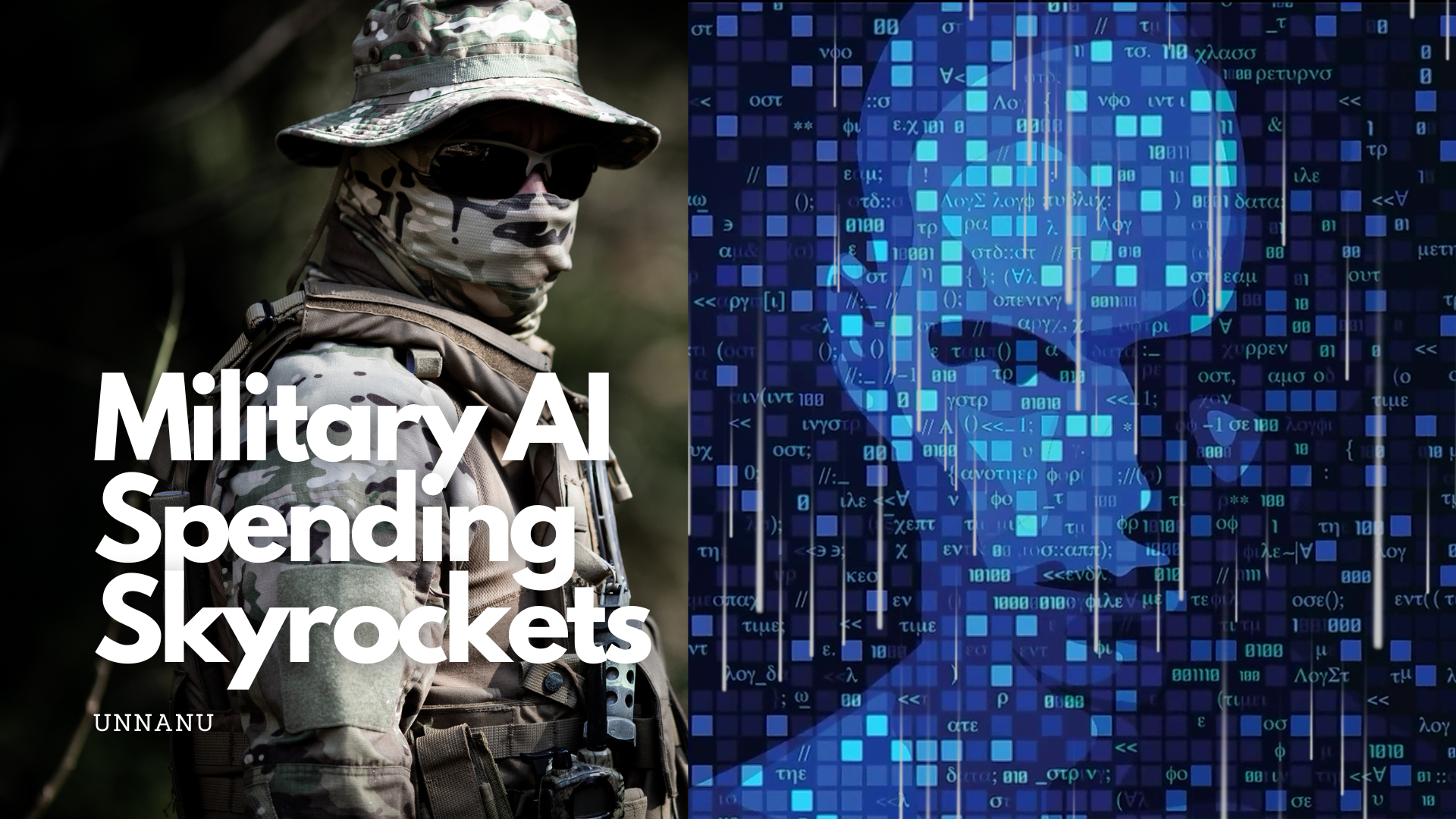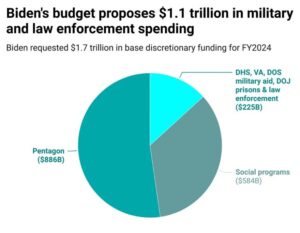To The Surge In U.S. Military Ai Investments
The United States military’s commitment to maintaining its technological supremacy has found a new frontier in the realm of Artificial Intelligence (AI). With global adversaries rapidly advancing their capabilities, the Pentagon has recognized the transformative potential of AI technologies across various facets of warfare and defense. This acknowledgment has catalyzed an unprecedented surge in investments aimed at integrating AI systems into operations, strategy formulation, and decision-making processes.
These investments are not just about enhancing efficiency or reducing costs; they are fundamentally about redefining the dynamics of military power in the 21st century. By leveraging AI for tasks ranging from intelligence gathering and analysis to autonomous systems operations, the U.S. military aims to achieve a decisive edge over its adversaries. The strategic shift towards AI underscores a broader trend within defense circles, acknowledging that future conflicts will likely be fought as much with algorithms and data as with traditional weaponry.
This surge in AI investment marks a pivotal moment in modern military strategy, signifying a profound evolution in how wars are waged and won.
How is AI being used in Modern Warfare ?
Artificial Intelligence is being used in a many of ways in modern warfare. Here are some of them:
1. Autonomous Weapons: AI allows for the development of autonomous weapons, which can act and react without human intervention. These systems can be used to identify, track, and engage targets, potentially reducing the time taken to counter threats.
2. Intelligence Analysis: AI can sift through large datasets to identify patterns and trends, a process that would take a human analyst considerable time. For instance, machine learning algorithms are used to analyze satellite images, track troop movements, or even predict enemy action.
3. Cyber Security: AI-based systems are increasingly used to secure information networks and systems against hacking and other forms of cyber-attacks. Machine learning algorithms can detect suspicious activities and anomalies based on previous patterns, allowing for quicker responses to potential threats.
4. Unmanned Vehicles: AI powers unmanned vehicles, be they aerial drones, unmanned ground vehicles, or autonomous submarines. These unmanned systems can perform surveillance, carry out attacks, or deliver supplies without risking human lives.
5. Electronic Warfare: Advanced machine learning algorithms are used to control electronic warfare capabilities, including interference, disruption, or use of enemy electronic infrastructure. It plays a crucial role in jamming enemy communications or deceiving opponent radars and sensors.
6. Battle Field Healthcare: AI can help save soldiers’ lives on the battlefield through predictive medical diagnosis and treatment, robotic surgery, medical supply logistics, etc.
7. Training and Simulation: Soldiers can be trained in virtual realities created by AI to replicate complex, real-world situations. AI can help the military refine tactics and strategies to prepare for a diverse range of scenarios.
Incorporating AI into military strategy offers unprecedented advantages in speed, precision, and decision-making capabilities. It enhances situational awareness through real-time data analysis, enabling forces to anticipate adversary moves and counteract swiftly. Moreover, AI-driven technologies can manage complex logistics, optimize resource allocation, and support manned and unmanned missions with greater efficiency.
However, this reliance on artificial intelligence also introduces new vulnerabilities and ethical dilemmas regarding autonomous weapons systems. Hence, while the U.S. military’s investment in AI signifies a transformative shift towards future-ready defense mechanisms, it also necessitates rigorous oversight to navigate the challenges posed by this digital arms race.
Key Areas Within The U.S. Military
The U.S. military’s foray into artificial intelligence (AI) is both broad and profound, reflecting a commitment to maintaining technological superiority on the global stage. One key area of AI application within the U.S. military is autonomous systems, where AI-driven vehicles and drones are being developed for reconnaissance missions and logistical support, minimizing human risk in hostile environments. In the realm of cyber defense, AI algorithms are deployed to detect and neutralize threats faster than ever before, safeguarding critical infrastructure against increasingly sophisticated cyber attacks.
– AI plays a vital role in data analysis and decision-making processes, efficiently sorting through large amounts of data to identify patterns and provide actionable insights.
– AI technologies are being included in simulation and training programs to create realistic scenarios that can help military personnel prepare for potential battlefield challenges.
– The Pentagon has allocated a significant budget for the development of AI, highlighting the military’s focus on using advanced technology to maintain its strategic advantage.
– The Pentagon is investing in AI technology to improve a wide variety of military operations, including intelligence gathering and analysis, autonomous vehicles, and cyber security defenses.
– The Pentagon’s AI investments are also focused on funding pioneering research and development projects that could overhaul future warfare paradigms.
– These investments are channeled into numerous programs and initiatives, all designed to leverage AI’s potential to enhance decision-making processes, operational efficiency, and battlefield effectiveness.
– The Pentagon is collaborating with both tech giants and innovative startups to gain access to the most advanced AI technologies available.
– This approach ensures that the U.S. military remains at the forefront of technological innovation, ready to face the challenges of modern warfare where digital skills may be as important as physical strength.
The Pentagon’s Budget Allocation For Ai Development
The surge in the U.S. military’s investments into artificial intelligence (AI) has not only underscored its commitment to advancing defense capabilities but has also catalyzed a series of strategic collaborations and partnerships with leading tech giants as well as nimble startups. These alliances are pivotal, leveraging the innovative prowess and technological expertise of Silicon Valley and beyond to fulfill the military’s ambitious AI objectives.
Companies like Google, Microsoft, and Amazon bring to the table unparalleled cloud computing resources, cutting-edge AI algorithms, and robust data analytics capabilities—essential components for developing intelligent systems capable of autonomous decision-making, surveillance, and cybersecurity defense mechanisms.
Ethical Considerations: Artificial Intelligence in Military
Artificial Intelligence (AI) is becoming increasingly important in today’s world, with its applications spreading across various sectors. In the realm of military and warfare, AI has the potential to revolutionize the way wars are fought, potentially reducing human casualties and bringing in higher efficiency. However, the usage of AI in the military raises several serious ethical concerns.
1. Autonomy in Decision-Making: AI-powered weapons could make decisions to engage a target or not, raising concerns about where accountability lies if things go wrong. If AI makes mistakes, they could potentially have catastrophic consequences.
2. Mistaken Targeting: Machine learning may not be perfect and AI systems may misinterpret sensor data leading to unwarranted accidents or collateral damage.
3. Difficulty in Abiding by International Laws: According to international humanitarian law, the parties in conflict must differentiate between civilians and combatant. AI-assembled machines may find it challenging to distinguish the two, potentially leading to violations of human rights.
4. Unpredictability: The unpredictability of AI algorithms may lead to unintended escalation of conflicts.
5. Security Risks of AI Systems: There are concerns regarding hacking or manipulation of AI systems, which could be turned against their operators, leading to significant harm.
6. Deterrence and Escalation: Increased reliance on AI in military might lead to new forms of arms races aiming for superior AI capabilities.
7. Dehumanizing Warfare: The use of AI in military warfare could desensitize people to the consequences of warfare, making wars more likely to occur.
8. Job loss: The use of AI in the military could potentially lead to job loss in the defense sector.
It’s crucial to have robust ethical guidelines, legal regulations, and international agreements in place to guide the use of AI in military conflict, as well as having safeguards in place to prevent misuse. Ethical considerations should be integral to the development process for new AI-led military technologies. It’s important to remember that just because something is technologically feasible does not make it ethically desirable or permissible.
The prospect of AI-driven warfare raises questions about proportionality, discrimination between combatants and non-combatants, and adherence to international humanitarian law.
Moreover, the lack of comprehensive international norms on military AI use exacerbates these ethical dilemmas. Without a unified framework or agreement among nations, there is a risk that the deployment of military AI technologies could escalate conflicts or lead to unintended consequences. Thus, establishing global standards and regulatory mechanisms is imperative to ensure that advancements in military AI contribute to peacekeeping efforts rather than exacerbating armed conflicts, underscoring the critical balance between technological innovation and ethical responsibility.
The journey ahead is as much about pioneering new technologies as it is about preserving our core values and commitments to humanity.





